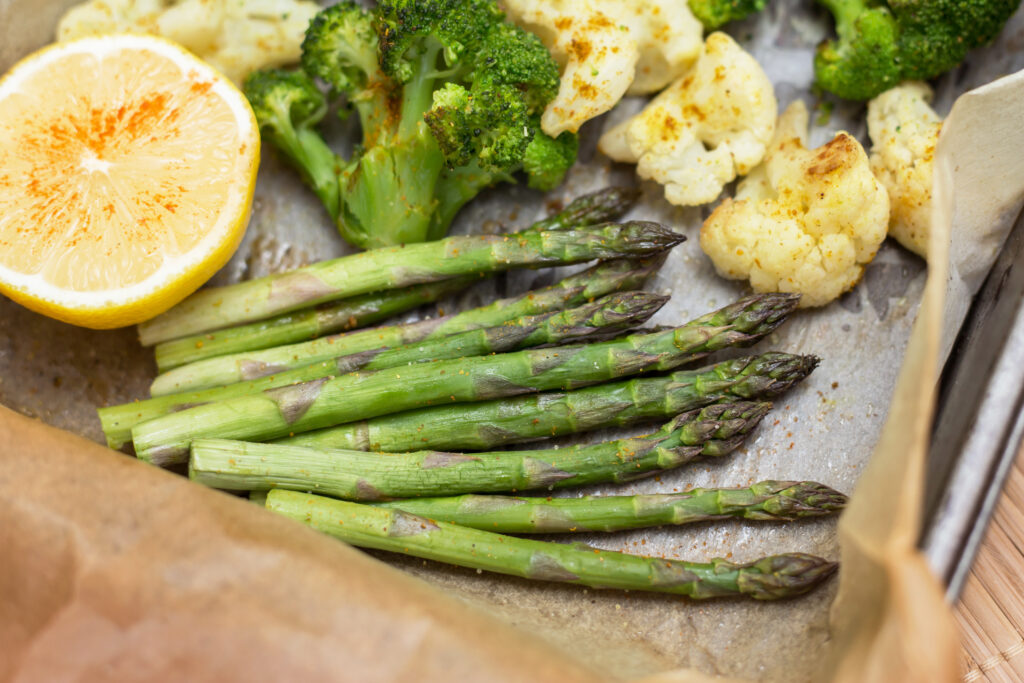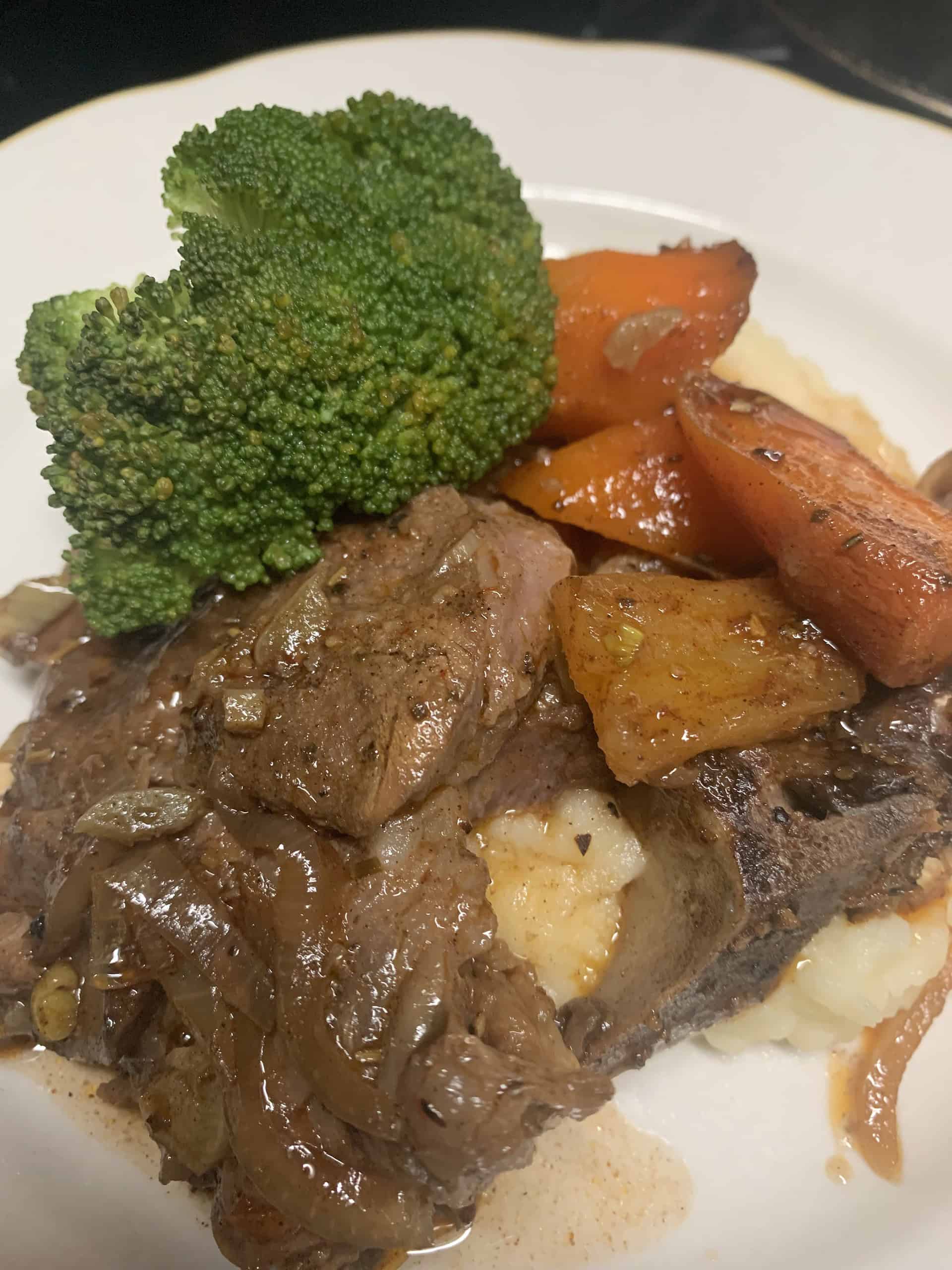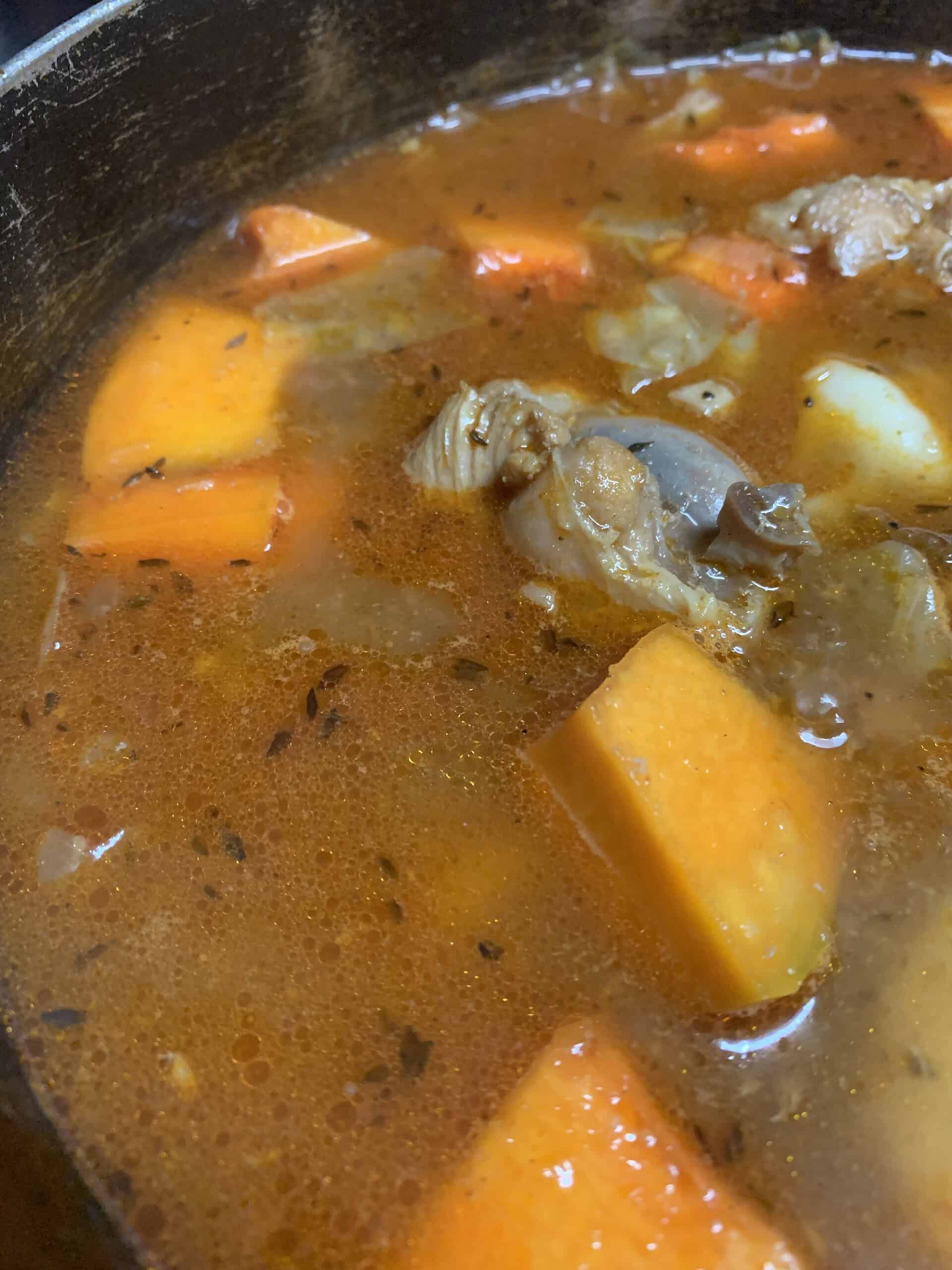Sharing is caring!
Roasted Cauliflower and Asparagus: A Delicious and Nutritious Veggie Duo
Looking for a mouthwatering and healthy side dish to elevate your meals? Look no further than this delightful combination of roasted cauliflower and asparagus. Not only will it satisfy your taste buds, but it also packs a nutritious punch!
Imagine tender, caramelized cauliflower florets, and crisp asparagus spears, both expertly seasoned and roasted to perfection. The result? A symphony of flavors and textures that will leave you craving for more.
But this veggie duo isn’t just delicious; it’s also perfect for you. Cauliflower is low in calories and a rich source of vitamins, minerals, and fiber. Asparagus, on the other hand, is packed with antioxidants and essential nutrients, promoting good digestion and a healthy immune system.
Whether you’re a vegetarian, health-conscious, or simply looking to add more variety to your meals, roasted cauliflower and asparagus are a winning combination. So, try this recipe and discover this vegetable duo’s unbelievable flavors. Your taste buds and body will thank you!

Health benefits of cauliflower and asparagus
Cauliflower and asparagus are not only delicious, but they also offer numerous health benefits. Let’s take a closer look at what makes these vegetables so nutritious.
Cauliflower is low in calories and nutrients, making it an excellent choice for weight management. It is a great source of vitamins C, K, and B6, folate, and fiber. These nutrients support a healthy immune system, promote bone health and aid digestion. Additionally, cauliflower contains antioxidants that help protect against chronic diseases.
Asparagus, on the other hand, is a powerhouse of antioxidants and essential nutrients. It is a rich source of folate, vitamins A, C, E, and K, and fiber. These nutrients contribute to a healthy heart, good digestion, and a robust immune system. Asparagus also contains compounds shown to have anti-inflammatory and anti-cancer properties.
Nutritional profile of cauliflower and asparagus
Cauliflower and asparagus are not only delicious, but they also offer a wide range of essential nutrients. Let’s take a closer look at their nutritional profiles.
Cauliflower is low in calories, with approximately 25 calories per cup. It is an excellent source of vitamin C, providing about 77% of the daily recommended intake. It also contains vitamin K, folate, and fiber, contributing to overall health. In terms of minerals, cauliflower is rich in potassium and magnesium.
Asparagus is also low in calories, with approximately 20 calories per cup. It is an excellent source of folate, providing about 66% of the daily recommended intake. Asparagus is also rich in vitamins A, C, and K and fiber. It contains minerals such as potassium, phosphorus, and selenium, essential for maintaining good health.

How to select and prepare cauliflower and asparagus for roasting
To enjoy the best flavors and textures from roasted cauliflower and asparagus, it’s important to select and prepare them properly. Here are some tips to help you get started.
When selecting cauliflower, look for firm heads free from brown spots or blemishes. The florets should be tightly packed and have a creamy white color. Avoid cauliflower with a strong odor, as it may indicate spoilage.
To prepare cauliflower for roasting, remove the outer leaves and cut off the tough stem. Break the head into florets of similar size for even cooking. Rinse the florets to remove dirt or debris, and pat them dry with a paper towel.
When selecting asparagus, look for firm spears with tight tips. The color should be vibrant green, and the stalks should be straight and firm. Avoid asparagus with wilted or slimy stalks.
To prepare asparagus for roasting, trim off the tough ends by bending the spear until it naturally snaps. This ensures that you remove the woody part of the stalk. Rinse the asparagus under cold water to remove any grit, and pat it dry with a kitchen towel.
Roasting techniques for cauliflower and asparagus
Roasting is a simple and delicious way to bring out the natural flavors of cauliflower and asparagus. Here are some techniques to help you achieve perfectly roasted vegetables.
For cauliflower, preheat your oven to 425°F (220°C). Toss the cauliflower florets with olive oil, salt, and pepper in a large bowl until evenly coated. Spread the florets in a single layer on a baking sheet lined with parchment paper or foil. Roast for 20-25 minutes or until the cauliflower is tender and golden brown. For extra flavor, you can sprinkle some grated Parmesan cheese or smoked paprika on top before roasting.
For asparagus, preheat your oven to 400°F (200°C). Place the trimmed asparagus spears on a baking sheet and drizzle them with olive oil, salt, and pepper. Toss gently to coat the asparagus evenly. Roast for 12-15 minutes or until the asparagus is tender and slightly crispy. You can also add a squeeze of lemon juice or some minced garlic for freshness and flavor.

Flavor combinations and seasonings for roasted cauliflower and asparagus
While roasted cauliflower and asparagus are delicious, you can enhance their flavors with various seasonings and combinations. Here are some ideas to get you started.
For cauliflower, add a pinch of cumin, turmeric, or smoked paprika to the olive oil before tossing the florets. You can also sprinkle some nutritional yeast or grated Parmesan cheese on top for a cheesy and nutty flavor. For a touch of sweetness, drizzle the roasted cauliflower with a balsamic glaze or honey.
For asparagus, experiment with different herbs and spices, such as garlic powder, onion powder, dried thyme, or rosemary. You can also wrap the asparagus in bacon before roasting for a savory twist. If you prefer a tangy flavor, squeeze some fresh lemon juice over the roasted asparagus or sprinkle it with lemon zest.
Serving suggestions and recipe ideas using roasted cauliflower and asparagus
Roasted cauliflower and asparagus can be served as a side dish or incorporated into various recipes. Here are some serving suggestions and recipe ideas to inspire you.
For a balanced and flavorful meal, serve the roasted cauliflower and asparagus alongside grilled chicken or fish. You can also toss them with cooked pasta, olive oil, and grated Parmesan cheese for a quick and delicious vegetarian pasta dish. Another option is to use the roasted vegetables as a topping for homemade pizza or a filling for savory tarts.
Combine the roasted cauliflower and asparagus with mixed greens, cherry tomatoes, and a light vinaigrette dressing for a refreshing salad. You can also add some crumbled feta cheese or toasted nuts for extra texture and flavor. Alternatively, blend the roasted vegetables with broth and spices to create a creamy and comforting soup.
Tips for storing and reheating leftover roasted cauliflower and asparagus
If you have any leftovers, store them in an airtight container in the refrigerator for 3-4 days. To reheat, preheat your oven to 350°F (175°C) and spread the vegetables on a baking sheet. Bake for 10-15 minutes, or until heated through. Alternatively, you can reheat them in a skillet over medium heat with a drizzle of olive oil until warm.
Variations and substitutions for roasted cauliflower and asparagus
While roasted cauliflower and asparagus are a winning combination, you can always experiment with variations and substitutions to suit your taste and dietary preferences. Here are some ideas to consider.
Instead of roasting cauliflower alone, mix it with other vegetables like broccoli, Brussels sprouts, or carrots for a colorful and flavorful medley. Similarly, you can combine asparagus with cherry tomatoes, bell peppers, or zucchini for freshness.
If you prefer a spicier kick, sprinkle red pepper flakes or chili powder on the roasted vegetables. Drizzle them with tahini sauce or a dollop of Greek yogurt for a creamy twist.

Is it better to roast or saute asparagus?
When deciding between roasting and sautéing asparagus, consider the desired outcome. Roasting at around 400°F brings out a sweeter, intensified flavor through caramelization, with crispy tips and tender stems. Sautéing involves cooking on a pan over medium-high heat with oil or butter, preserving vibrant color and a slightly firmer texture. Roasting offers enhanced flavor and texture contrast, while sautéing is quicker, maintains color, and provides more control over doneness. Both methods are delicious, so choose based on your preference for flavor and texture.
Why is my roasted cauliflower mushy?
If your roasted cauliflower turns out mushy, a few factors might be at play. One common reason is overcrowding on the baking sheet. When the cauliflower pieces are too close together, steam can build up and cause them to steam instead of roast, resulting in a softer texture. Another possibility is to be preheating the oven adequately. Starting with a hot oven is crucial for proper roasting, as it helps create that desired outer crispiness while retaining the natural firmness of the cauliflower.
Lastly, using too much oil can also lead to mushiness. Excess oil can make the cauliflower pieces too greasy, preventing them from adequately roasting. To address this, ensure proper spacing, preheat your oven, use just enough oil to coat the pieces evenly, and consider adding a brief broil at the end for added crispiness while maintaining a firm texture.
How to roast a variety of vegetables together?
Roasting a variety of vegetables together can create a delicious and colorful dish. To do this successfully, follow these steps:
Uniform Cutting: Start by cutting the vegetables into similar-sized pieces. This ensures even cooking, preventing smaller pieces from burning while larger ones remain undercooked.
Consider Cooking Times: Group vegetables with similar cooking times together. For example, root vegetables like carrots and potatoes might take longer than softer ones like peppers or zucchini. This prevents overcooking or undercooking any particular vegetable.
Preheat Oven: Preheat your oven to around 400°F (200°C) to ensure a hot environment for roasting.
Seasoning: Toss the vegetables with olive oil, salt, and herbs or spices. This adds flavor and helps the vegetables caramelize nicely.
Arrangement: Spread the vegetables in a single layer on a baking sheet, ensuring some space between each piece. Overcrowding can lead to steaming instead of roasting.
Roasting: Place the baking sheet in the oven and roast for about 20-30 minutes, tossing the vegetables halfway through. Keep an eye on them to prevent burning.
Test for Doneness: Test the vegetables for doneness by piercing them with a fork. They should be tender with a slightly crispy exterior.
Serve: Once roasted to perfection, you can serve the mixed vegetables as a side dish or incorporate them into salads, grain bowls, or wraps.
Remember, experimentation is key. Different vegetables may require slight adjustments in seasoning, cooking time, and temperature. With practice, you’ll develop a sense of combining various vegetables to create a harmonious and flavorful roasted medley.
Recommendations
Miso Salad – Tap Here
Crispy Potatoes – Tap Here
BBQ Buffalo Wings – Tap Here
Corned Beef – Tap Here
Sky Juice – Tap Here
Conclusion and final thoughts on incorporating roasted cauliflower and asparagus into your diet
Roasted cauliflower and asparagus offer a delightful combination of flavors and textures that elevate any meal. Not only are they delicious, but they also provide a wide range of essential nutrients and health benefits. Whether vegetarian, health-conscious, or simply looking to add more variety to your meals, roasted cauliflower and asparagus are versatile and nutritious choices, so don’t hesitate to try this recipe and discover the unbelievable flavors this vegetable duo offers. Your taste buds and body will thank you!
Try experimenting with different seasonings and serving suggestions to find your favorite way to enjoy roasted cauliflower and asparagus. Whether roasting them as a side dish, incorporating them into recipes, or adding them to salads, these vegetables will indeed become a staple in your kitchen. So, get ready to indulge in the deliciousness of roasted cauliflower and asparagus while reaping the health benefits they provide.
More Ideas
Vegetable Salad – Link
Winter Salad – Link
Roasted Vegetable Sandwich – Link
Roasted Vegetable Soup – Link
Vegetable Pasta – Link









2 comments
Awesome! Its genuinely remarkable post, I have got much clear idea regarding from this post
happy to help